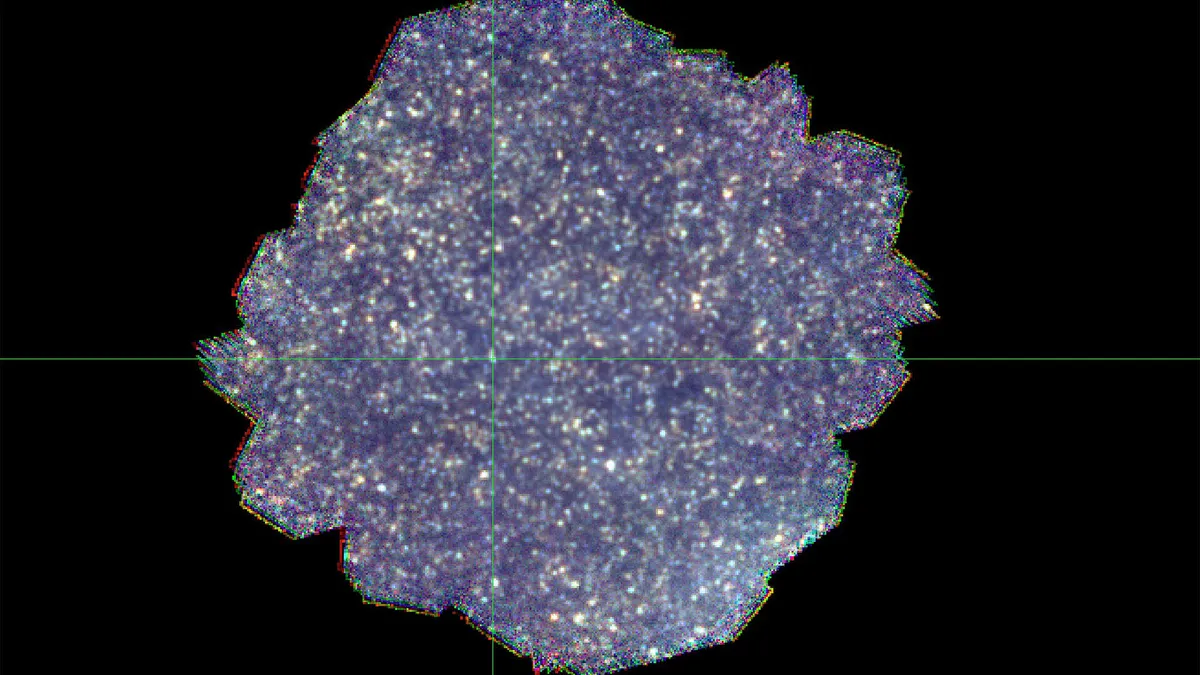
A team of astronomers has made a groundbreaking discovery that may lead to the identification of a hidden population of galaxies, potentially unlocking vital secrets about the universe's formation and energy generation. If these galaxies are confirmed, they could fundamentally alter our existing models of galaxy evolution and their numbers.
These potential galaxies might be the missing link in understanding the energy budget of the universe, particularly in terms of infrared light. Their combined light could provide enough energy to account for all remaining emissions observed at long wavelengths, effectively filling in the gaps in current energy models.
Evidence suggesting the existence of these hidden galaxies was detected in the deepest image of the universe captured at long far-infrared wavelengths. This remarkable image, which includes nearly 2,000 distant galaxies, was produced by researchers from STFC RAL Space and Imperial College London. Dr. Chris Pearson, the lead author of one of two papers published in the Monthly Notices of the Royal Astronomical Society, remarked, “This work has pushed the science with Herschel to its absolute limit, probing far below what we can normally discernibly see and potentially revealing a completely new population of galaxies that are contributing to the very faintest light we can observe in the universe.”
The researchers created their deep view of the universe by stacking 141 images using data from the SPIRE (Spectral and Photometric Imaging Receiver) instrument on the Herschel Space Observatory. This European Space Agency mission operated from 2009 to 2013 and holds the record for the largest infrared space telescope until the James Webb Space Telescope took over in 2021. The resulting image, known as the Herschel-SPIRE Dark Field, is five times deeper than the previous single deepest observation from Herschel and at least twice as deep as any other area observed by the telescope.
This innovative technique allowed the astronomers to identify some of the dustiest galaxies in the cosmos, where new stars are predominantly formed. Moreover, it enabled them to track fluctuations in the number of galaxies based on brightness and measure each galaxy’s contribution to the universe’s overall energy budget. However, the sheer depth of the image caused many individual galaxies to merge, making it challenging to extract clear data.
Thomas Varnish, a Ph.D. student at the Massachusetts Institute of Technology (MIT) and lead author on the second paper, explained the challenges faced during analysis. “We employed statistical techniques to get around this overcrowding, analyzing the blurriest parts of the image to probe and model the underlying distribution of galaxies not individually discernible in the original image,” he said. Varnish, who conducted most of his research as a summer intern at Imperial College London and RAL Space, noted that they found potential evidence of a new, undiscovered population of faint galaxies hidden within this blur.
The research team is now focused on confirming the existence of this possible new group of galaxies through observations using telescopes at different wavelengths. Their goal is to understand the nature of these faint, dusty objects and their significance in the broader context of the universe’s evolution. Dr. Pearson emphasized, “When we look at starlight through normal telescopes, we are only able to read half of the story of our universe; the other half is hidden, obscured by the intervening dust.”
He further explained that approximately half of the universe's energy output comes from starlight absorbed by dust and re-emitted as cooler infrared radiation. To truly grasp the universe's evolution, it is crucial to observe the sky in both optical and longer wavelength infrared light.
The Herschel Space Observatory played a vital role in infrared observations, with its SPIRE instrument covering the longest wavelengths. Throughout its four-year mission, Herschel routinely focused on a single patch of ‘dark sky’ for calibration. Despite ceasing operations over ten years ago, the Herschel archive continues to yield invaluable results. Dr. David Clements, an astrophysicist at Imperial College London, noted, “These results show just how valuable the Herschel archive is. We're still getting great new results more than 10 years after the satellite stopped operating.”
To further investigate these promising findings, researchers are advocating for the next generation far-infrared mission, known as PRIMA (Probe far-Infrared Mission for Astrophysics). Supported by a UK consortium, including RAL Space, the University of Sussex, Imperial College London, and Cardiff University, PRIMA aims to utilize a 1.8-meter telescope optimized for far-infrared imaging and spectroscopy. This mission seeks to bridge the gap between existing observatories like the James Webb Space Telescope and radio telescopes.
PRIMA has been shortlisted as one of two proposals for NASA’s upcoming $1 billion (£772 million) probe mission, with the final mission selection to be announced in 2026.